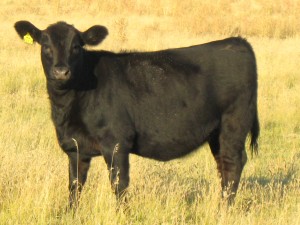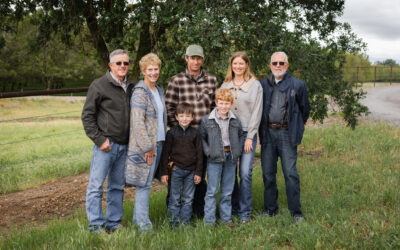THE question

In my travels throughout the northern plains states and western U.S. I am often asked by producers; “How do I produce CAB?”.
First, one must understand the specifications of the Certified Angus Beef® brand, which have been covered here in detail previously. Then, it’s important to understand that there is no certification process for live animals, so a ranch cannot consign the cattle or commit them to the brand prior to harvest.
Over 85% of the U.S. packing plant capacity is licensed to produce the brand, so most fed cattle will find their way through the proper channels to be considered for qualification into the CAB® brand. The real chore for the individual producer is not finding a market niche, it’s simply to build the quality (internal quality, as in “carcass quality”) within the cow herd and then marketing that quality to an advantage.
I think that producing quality carcass genetics is an often misunderstood concept, one that’s ridiculed by some as a “fad” or a “chase” toward a single trait, with dire consequences. Admittedly, there have been times when the cattle business has seen fads, when we’ve taken what seemed like a good thing way too far. The easy example to highlight is the vast difference in mature frame size of the 1950’s versus the 1980’s. The word “extreme” hardly describes those contrasts.
At Certified Angus Beef, we don’t think in terms of chasing after marbling, the most influential of the 10 carcass specifications. We think in terms of getting the best out of Angus cattle.
That’s exactly what I tell people. If you have Angus cattle, you’ve got the foundation for success in terms of carcass quality. After all, the “Butcher’s Breed” is not an accidental nickname. So, there’s an accurate assumption that with Angus cattle we’re starting with more than average potential to generate enough marbling to hit the specs for the CAB® brand. But it’s just potential unless you add focus. Clearly, a balance of economically important traits is the key to selection, but keeping positive pressure on marbling is relatively easy to do. I can find high and low birth-weight bulls with marbling as well as high and low growth bulls with marbling, so why not go with marbling? After that, genetic selection within the breed for cattle that are, at the very least, above breed average for the marbling EPD will get you moving toward the goal.

Then, it’s on to management and marketing, which I’ll cover in another segment. So check back tomorrow to get the rest of the story…
~Paul
You may also like
Legacy in the Golden Land
On a quiet stretch of Northern California rangeland, a different story unfolds. The Borror family’s legacy modestly speaks through the cattle they raise, the ground they steward. The generations who’ve made a life here demonstrate commitment to doing things right, even when no one is watching.
Marbling, Feet and Fertility: Are they related?
The Angus breed has enough genetic diversity to allow breeders, and their commercial bull customers, to make progress across multiple traits simultaneously. One bloodline may be high in marbling but does not check the boxes you need for other traits. That does not mean marbling is the cause—it simply means your search for the ideal genetic pairing is not done.
Working for Premiums
The commercial Angus rancher from Collyer, Kansas, came back for daily homework in 1999 after a year at college. For 25 years now, he’s studied all the ways to grow his family’s W6 Cattle cow-calf herd with Angus at the base. Guided by data, Walt worked to improve the herd from zero Primes to averaging 60 percent. Learning what drives premiums prompted improvement.



